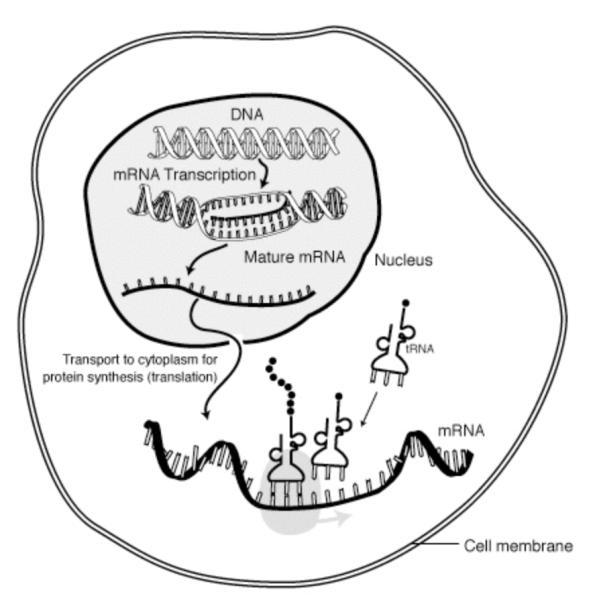The race for the first FDA approved coronavirus vaccine is heating up, and it appears that Pfizer may cross the finish line first. Assuming everything goes well, Pfizer plans to apply for emergency approval in the third week of November, according to the Financial Times.
Working in collaboration with the German firm BioNTech, the product is an mRNA vaccine. If approved, it will be the first ever mRNA vaccine on the market. How does it work?
A typical vaccine uses either living but weak ("attenuated") microbes, dead microbes, or pieces of microbes (like proteins). Ramping up production for the vaccines that use whole microbes, especially viruses, is cumbersome. As we described previously, viruses must be grown inside cells, which can be done inside a bioreactor or an embryonated egg. But this is resource intensive and time-consuming.
One of the main benefits of mRNA vaccines is that they are relatively easy to crank out. Cells aren't necessary. Instead, everything can be done quickly in test tubes using a handful of chemicals (the "letters" that make up RNA, which are A, U, C, and G) and an enzyme. The resulting mRNA molecules can then be packaged into tiny fat bubbles and injected into the patient.
Traditional Vaccines vs. mRNA Vaccines
A typical vaccine directly stimulates the immune response. A microbe or protein injection sets off alarms, inflammation occurs, and antibodies are produced. The same eventually happens with an mRNA vaccine, but there's a crucially different first step: The mRNA must be taken up by your body cells, and then your own cells produce the protein that stimulates an immune response.

Source: C. Zhang, et al. Front Immunol (2019)
The reason this happens is because your body cells all display special molecules on their surfaces known as Major Histocompatibility Complex (MHC) proteins. Like a baseball glove holding a baseball, an MHC protein (the "glove") holds onto another, smaller molecule (the "ball"). Your immune system is constantly monitoring these molecules, and if it doesn't recognize the "ball" as belonging to you, it mounts an attack.
Pfizer hopes to provide 100 million doses worldwide by the end of this year and 1.3 billion by the end of 2021. Let's hope they're successful, along with all the other companies working on their own coronavirus vaccines. The more, the merrier.




